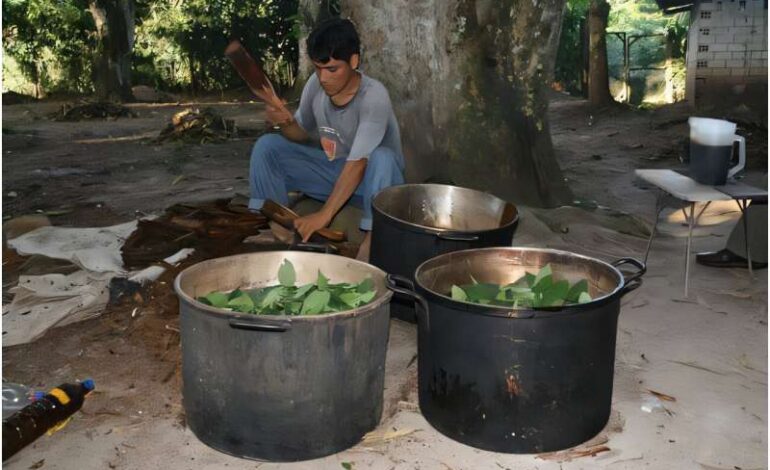Explore Psychedelic Nature: A Journey Through Diverse Ecosystems

Psychedelic compounds are more than just intriguing substances; they have deep evolutionary roots across various ecosystems. Each molecule serves a purpose, whether as a defense mechanism against herbivores or as a lure for pollinators. A recent exploration highlights the rich tapestry of psychedelics found in environments ranging from tropical rainforests to arid deserts and even the frozen tundra.
Rainforests: A Rich Source of Psychedelics
Tropical rainforests, particularly the Amazon, are teeming with chemical diversity. Among the estimated 10,000 tree species in this region, some produce dimethyltryptamine (DMT), a powerful psychedelic ingredient in the brew ayahuasca. DMT is a naturally occurring tryptamine that shares a chemical lineage with serotonin and melatonin, crucial for mood regulation and sleep. One notable DMT-producing tree is Psychotria viridis, commonly known as chacruna. This small understory tree belongs to the same family as coffee.
Another source of DMT is the yopo tree (Anadenanthera peregrina), native to the Amazon and found in the Caribbean. While researchers continue to investigate why certain species develop these psychedelic compounds, many believe it is a result of evolutionary adaptations aimed at deterring herbivores and pathogens.
Deserts: Unexpected Psychedelic Life
Contrary to their barren appearance, deserts harbor potent psychedelics. The peyote cactus, a small, slow-growing organism found in Mexico and southern Texas, produces mescaline, a psychedelic alkaloid. This cactus faces threats from poaching as collectors seek the hallucinogenic effects of mescaline.
Another psychedelic cactus, the San Pedro cactus (Trichocereus macrogonus var. pachanoi), flourishes in the high Andes and also produces mescaline but grows faster and taller than peyote. Beyond cacti, the Sonoran desert hosts the Sonoran Desert toad, which secretes 5-MeO-DMT, a powerful hallucinogen.
From Tundra to Grasslands: Diverse Psychedelic Ecosystems
Even the inhospitable tundra of Siberia houses psychedelic substances. The iconic fly agaric mushroom (Amanita muscaria) is well-known for its distinctive red cap with white spots. This mushroom produces compounds like muscimol and ibotenic acid, which, while different from psilocybin, are also hallucinogenic.
Historically, the fly agaric has been associated with various cultural narratives, from Viking lore to connections with early Christianity. Its symbiotic relationship with trees such as birch and oak highlights its ecological importance.
The world’s grasslands, often perceived as serene, conceal a darker psychedelic history. The fungus Claviceps purpurea, known as ergot, infests grass seeds with ergot alkaloids. These compounds, chemically related to LSD, have caused mass hallucinations throughout history, leading to episodes of hysteria in medieval Europe. In 1938, chemist Albert Hofmann synthesized LSD from ergot, a discovery that profoundly influenced modern culture and technology.
Moreover, the temperate grasslands are home to the liberty cap mushroom (Psilocybe semilanceata), known for its high psilocybin concentration. This mushroom plays a crucial role in recycling nutrients in its ecosystem while also exhibiting antimicrobial properties.
Research into psychedelics is still in its infancy. The Golden Guide to Hallucinogenic Plants, published by explorer Richard Evans Schultes in 1976, documented over 100 plant and fungi species. Recent studies indicate that 400,000 plant species may produce millions of unique molecules, with the vast majority yet to be identified and characterized.
As scientists continue to explore these natural wonders, the potential for new discoveries remains vast. The ongoing research into psychedelic substances could unlock further understanding of their roles in both ecological systems and human wellness.






